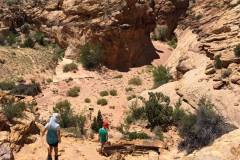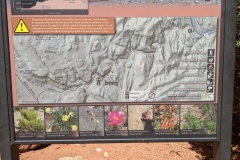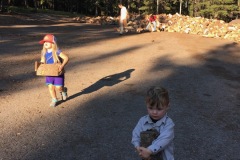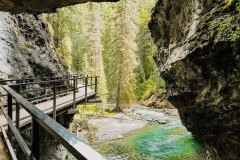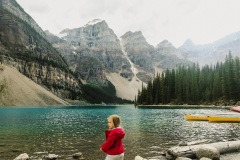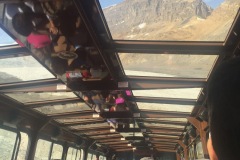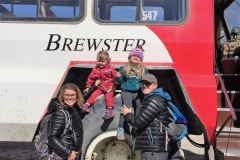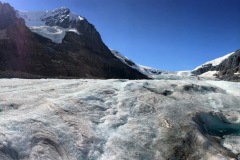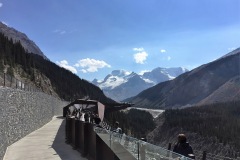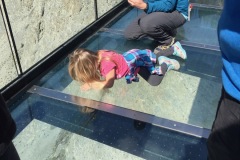For some reason I’ve always really enjoyed camp stoves. I don’t know if it hearkens back to my pyromaniac stage of youth, but I dig using them. We’ve used quite a few different ones over the years, but I feel we’ve settled on good solutions for our different needs.
We have three stoves that we carry in the Sprinter, each with it’s own specific purpose.



FULL TIME TRAVEL: ELECTRIC DAY TO DAY USE
For day to day use in the van we have an induction cooktop that runs off of our lithium batteries.This has been an excellent stove as it allows us to cook without having a combustible fuel burning inside and carbon monoxide is a non issue. We also don’t have to worry about figuring out where to get more and transporting propane. As long as we keep the batteries topped of through solar or with our alternator when we drive, we’re good to go. Another bonus has been the temperature control and instant heat when cooking. I used think induction stoves were a gimmick, but I’m sold now.
OUTSIDE COOKING – BEACHSIDE
The next stove we have is a Snow Peak Baja Burner. I’m a sucker for nicely made things and this is a piece of gear that I lusted after for awhile. It’s a single burner that runs off the small isobutane canisters that are commonly used with backpacking stoves. It has a preheat generator in the flame so it can be used with the canister inverted and that allows it to get good fuel flow in colder conditions. It can be used inside the van as a backup if we have any electrical issues, but we carry it mainly because it drops into Snow Peak Iron Grill Table. We use this setup when we want to cook outside or away from the van. It’s pretty awesome.
CAMPING / BACKPACKING
The final stove we keep on board is the MSR Reactor. It’s not made for traditional cooking, but if you need boiled water there’s nothing better. We have the 1 liter version, but you can also get it with a 1.7L and 2.5L pot. It’s perfect for backpacking when you bring along freeze dried meals. There are other options that are lighter and pack smaller, but when your tired and hungry the simplicity and speed of this setup is appreciated. It’s basically impervious to wind and uses isobutane canisters just like the Snow Peak stove above.
These stove won’t work for everyone and there are so many other options that might be ideal for your use case.
Just like everything in life you can spend a lot or you can spend a little. You can easily spend upwards of $3-$400 on a fantastic Partner Steel stove or $5 on a Coleman white gas stove at a garage sale. They’ll both get the job done, but they each have some tradeoffs.
I’ll break down some of the options that are available.
Let’s talk fuel.
The most common fuels are: White Gas, Propane, Isobutane, and Butane.




The classic green Coleman stove with the red fuel tank runs off of white gas. This can easily be purchased at Walmart and most hardware stores usually in a gallon or 1 quart container. It is a liquid fuel so you need to careful when transporting it so it doesn’t leak and also when filling up your stove. It takes a little more practice to master the liquid fuel stove as it needs to be pumped up and primed to work. This can be a hassle if you just want to pull your stove out and click it on. Once it’s burning it will need to be pumped up again and the flame adjustment will not be instantaneous. White gas stoves also require a little more maintenance than others. If you like to tinker with things this is your stove. These stoves can be found at garage sales and thrift shops on the cheap.
Propane is the most common fuel for car camping stoves. It is easily found anywhere that sells camping supplies and they typically come in 1 pound canisters. Stoves that burn propane tend come in the 2 burner variety. Many companies like Coleman, Primus, Camp Chef, and Stansport make comparable models. If you are cooking for larger groups and have room to transport a large stove, a two burner Camp Chef with a griddle can kick out some pancakes in no time. The only bummer about propane is that you are left with empty canisters that need to be disposed of properly when empty. There are adapters that allow you to refill them from a standard 25# tank used with a home grill, but I haven’t tried it. These stoves fire up quickly, some with built in igniters, and usually have good flame adjustability. One other option that we’ve really enjoyed is our Blackstone griddle. It’s like a flat top you would see at a little diner and allows you to cook amazing breakfasts and smashed burgers. Our little 17” version has been awesome for smaller groups, but they have larger versions available.
Isobutane is usually the go to fuel for backpackers. The canisters are not as common as propane and may require a trip to a specialty outdoor store to find them. We’ve had good luck with our local Walmart though. I really like these stove because they pack small and can do double duty for car camping and backpacking. If you have a smaller vehicle this can be a great option. You can choose a stove that mounts on top of the canister or one that has a hose that runs from the top of the canister out to the stove. If you only plan to boil water a top mounted stove is great, but for more involved cooking I would recommend a remote mount setup. I’ve had many different stoves and they all seem to perform well. You can’t go wrong with MSR, Jetboil, Snow Peak, and Kovea.
Butane is a fuel that is not as commonly used, but if you plan on camping in warmer conditions you should totally check into it. Butane is easily found in a lot of asian markets or restaurant supply stores and can be pretty cheap. The compatible stoves are usually a single burner and are pretty compact. The nice thing about a butane stove is that it can adjusted down to a super low simmer or a raging flame. The setup is quick as a single fuel canister is typically stored inside the stove. There are many different brands out there, but we’ve had good luck with the Japanese brand Iwatani. Gas-One makes a cool butane stove that can be adapted to also run on propane which gives you the ability to run either fuel. Butane tends to struggle when the temperature drops below 40 degrees, so keep that in mind.














